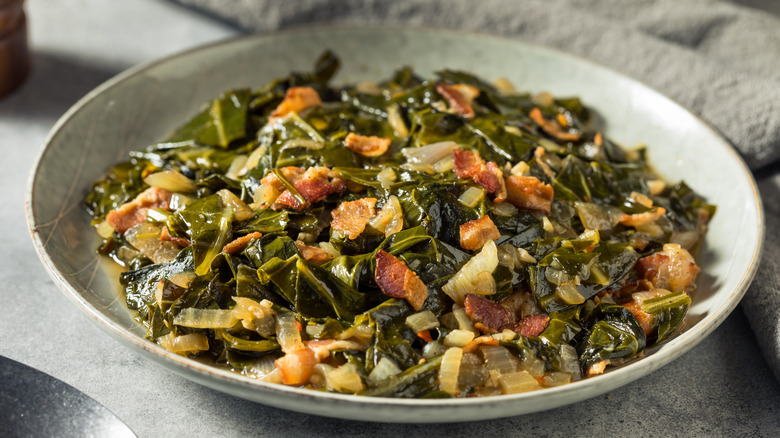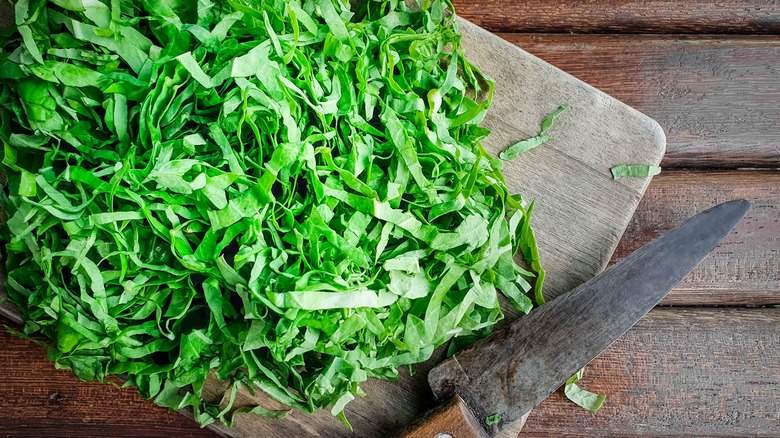The Ideal Cutting Method To Amplify The Flavor Of Collard Greens
If you're from the south or just enjoy good downhome cooking, you know no plate is complete without a side of collard greens. The cousin to other cruciferous veggies like kale and cabbage has held its rank as a staple in southern cooking for generations, with a tangy, savory flavor all its own. The presence of collards in American cooking, as we know them today, has historical roots in the slave trade, when enslaved Africans brought their knowledge of cooking with the plant from Africa into the lexicon of southern American cuisine.
Collard greens are traditionally enjoyed cooked down for many hours into a soft, soupy concoction called potlikker. And while any Southern grandma or country cook will tell you the flavor comes from a bit of added ham hock or pork, the best-flavored and well-cooked greens all start on the cutting board, with a slicing technique known as a chiffonade. No need for fancy knife skills to nail this tip — simply stack a pile of leaves, tightly roll, and thinly slice. The goal is to end up with uniform, very narrow ribbons that are perfectly prepped to cook down and soak up flavor.
Thin cuts mean less cook time and more flavor
If you've ever picked them fresh off the plant or grabbed a bundle from the farmer's market, you know collard greens in their raw form are a far cry from the delicate leaves of lettuce or arugula. They're substantial plants that can be tough and require the multiple hours they're often cooked to create the soft, well-cooked side we know and love. By using a chiffonade cut on your washed greenery, the extra fine slice allows for a much quicker cook time than would be required if braising wider strips.
Of course, there are a multitude of ways to enjoy your prepped collards aside from the old-school cooked-down style. After chiffonading, you can toss them in a pan and sauté them with olive oil for a simple side. But if you're craving greens like your grandma used to make them, skip the hours of prep time using this technique — the leaves won't take long to become tender and glossy. This method can be made fully plant-based if you're avoiding meat (without sacrificing flavor.) All you'll need are some onions and garlic, stock or water, and seasonings like salt, pepper, perhaps a splash of liquid smoke, and some hot sauce or vinegar to your taste. Cook down and enjoy the hearty yet delicate greens and savory, spicy stock that will remind you why they call it "soul food" in the first place.

